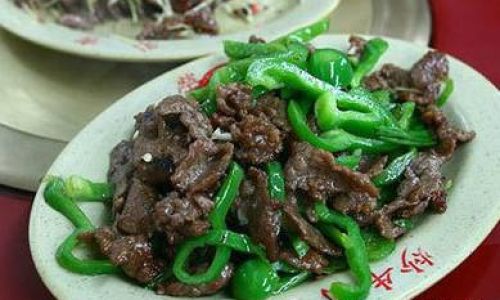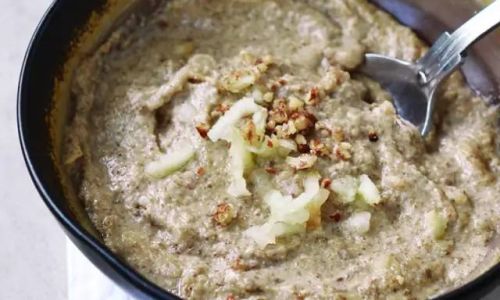Stir-frying is a cornerstone of culinary traditions across Asia, celebrated for its ability to transform simple ingredients into flavorful dishes within minutes. At the heart of this technique lies the question of timing: How long should meat be cooked to achieve that coveted balance of tenderness, juiciness, and caramelized flavor? The answer, while seemingly straightforward, hinges on variables like meat type, cut, thickness, and heat intensity. This article delves into the science and craft of stir-frying meat, offering a comprehensive guide to cooking times, techniques, and tips for perfection.
The Basics of Stir-Frying Meat
Stir-frying is a high-heat, quick-cooking method that relies on a searing hot wok or skillet to lock in moisture and flavors. Unlike slow-cooking methods like braising or roasting, stir-frying demands constant motion and precise timing. Meat, being the star ingredient, requires special attention to avoid overcooking (which renders it tough and dry) or undercooking (which poses food safety risks).
The general rule for stir-fried meat is 2–5 minutes, depending on the protein. However, this window is not one-size-fits-all. Factors like the meat’s thickness, marinade, and desired texture (e.g., rare, medium, well-done) can shift the timeline. Let’s break down the nuances for common meats.

Beef: From Tenderloin to Flank Steak
Beef’s versatility in stir-fries stems from its ability to tolerate high heat without becoming stringy. The key lies in selecting the right cut and slicing technique.
- Thinly Sliced Cuts: Flank steak, sirloin, and skirt steak are popular choices. Sliced against the grain into 1/8–1/4-inch strips, they cook in 5–3 minutes. The goal is a rapid sear to develop a caramelized crust while keeping the interior pink and tender.
- Thicker Cuts: Ribeye or New York strip, cut into 1/2-inch cubes, require 3–4 minutes. Stirring frequently ensures even browning without overcooking.
- Marinades: A quick marinade (soy sauce, cornstarch, baking soda) can tenderize tougher cuts like flank steak. However, marinated meat may cook slightly faster due to added moisture—adjust heat to prevent steaming.
Pro Tip: For medium-rare beef, remove it from the heat just before it’s fully cooked; residual heat will finish the process.
Chicken: Balancing Juiciness and Safety
Chicken’s lean nature makes it prone to drying out, but proper timing and heat control can mitigate this.
- Boneless, Skinless Breasts: Cut into bite-sized pieces, they cook in 3–4 minutes. Overcooking is the enemy here—use medium-high heat and stir constantly to prevent sticking.
- Thighs: Dark meat’s higher fat content offers more forgiveness. Cubed thighs take 4–5 minutes to reach juicy perfection.
- Ground Chicken: Due to its delicate texture, stir-fry for 2–3 minutes, breaking it into crumbles with a spatula.
Safety First: Chicken must reach an internal temperature of 165°F (74°C). Invest in a meat thermometer for accuracy, especially when working with thick pieces.
Pork: Tenderloin, Chops, and Beyond
Pork’s mild flavor pairs well with bold stir-fry sauces, but its susceptibility to dryness demands caution.
- Tenderloin: Sliced into medallions or strips, it cooks in 2–3 minutes. Avoid overcrowding the pan to ensure browning.
- Pork Chops: Bone-in chops take 4–5 minutes per side when seared, but for stir-fries, opt for boneless cuts and adjust to 3–4 minutes.
- Ground Pork: Similar to chicken, stir-fry for 3–4 minutes until no pink remains.
Food Safety: Pork must reach 145°F (63°C) for whole cuts and 160°F (71°C) for ground varieties. Trichinosis is rare in modern pork, but proper cooking remains essential.
Shrimp and Seafood: Delicate and Quick
Shrimp’s rapid cooking time makes it a stir-fry favorite, but precision is key to avoiding rubberiness.

- Medium Shrimp (31–40 count): Cook for 5–2.5 minutes, flipping once. They’re done when opaque and curled into a “C” shape.
- Larger Shrimp (16–20 count): Add 30 seconds to the cooking time. Overcooked shrimp turn gray and tough.
Pro Tip: Marinate shrimp briefly in baking soda water (1 tsp per lb) to enhance texture and prevent overcooking.
Mastering Heat and Technique
Stir-frying is as much about technique as timing. Here’s how to wield your wok like a pro:
- Preheat the Wok: A properly heated wok (until smoking) ensures instant searing. Add oil just before cooking to prevent burning.
- High Heat, Constant Motion: Use a spatula to toss meat continuously, ensuring even cooking and preventing sticking.
- Batch Cooking: Overcrowding the pan lowers the temperature and steams the meat. Cook in batches if necessary.
- Resting Time: Let meat rest for 2–3 minutes post-cooking. Residual heat redistributes juices, enhancing tenderness.
Advanced Tips for Flawless Stir-Fries
- Velveting Technique: A Chinese method where meat is marinated in a mixture of egg white, cornstarch, and oil, then blanched in oil or water before stir-frying. This seals in moisture, yielding silky-smooth results.
- Baking Soda Tenderizing: For tough cuts like flank steak, a 15-minute marinade with 1/4 tsp baking soda per pound of meat breaks down fibers. Rinse thoroughly before cooking.
- Searing for Flavor: For bold, Maillard-reaction flavors, sear meat in batches until caramelized, then remove and stir-fry vegetables separately. Recombine at the end.
Troubleshooting Common Issues
- Overcooked Meat: Reduce heat slightly and cook in smaller batches. Use a timer to avoid distractions.
- Undercooked Center: Slice thicker pieces or pound meat to even thickness. Invest in a meat mallet for uniform cuts.
- Uneven Cooking: Ensure the wok is preheated evenly. Rotate it over the burner if using a gas stove.
- Tough Texture: Marinate with acidic ingredients (lime juice, vinegar) or use a meat tenderizer.
Pairing Meat with Vegetables and Sauces
Stir-fries thrive on balance. Pair meat with crisp vegetables (bell peppers, broccoli, snap peas) and a harmonious sauce (soy, oyster, or hoisin-based). Add aromatics like garlic and ginger at the end to prevent burning.
Example Workflow:
- Stir-fry meat (2–4 minutes), then remove.
- Cook vegetables (3–4 minutes) until crisp-tender.
- Return meat to the pan, add sauce, and toss for 1 minute to coat.
Conclusion: The Pursuit of Perfection
Stir-frying meat is a dance of fire, timing, and intuition. While the general guideline of 2–5 minutes holds, mastering the craft requires practice, patience, and a willingness to experiment. Whether you’re searing a ribeye to medium-rare perfection or tossing succulent shrimp in a spicy Szechuan sauce, the principles remain the same: high heat, constant motion, and respect for the ingredient’s unique nature.
Next time you stand before a sizzling wok, remember that perfection isn’t about rigid adherence to a clock—it’s about listening to the sizzle, observing the color, and trusting your instincts. With time, you’ll learn to gauge doneness by sight, smell, and sound, turning a simple stir-fry into a culinary masterpiece.






0 comments